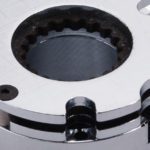A recent survey of industry experts had many underscore that connectivity in manufacturing is nothing new … bu there are significant new developments in IIoT.
MEET THE CONNECTIVITY and IoT EXPERTS …

O’Connor • Aerotech: Connectivity in manufacturing is not a new idea — it’s been around for decades — but what is new in IIoT is the volume and type of equipment (and devices) on the market that now offer connectivity. For an extreme example, there are now smart toilet-paper roll holders that let one know (from a mobile device) that one needs to change the roll. Products like this didn’t exist a decade ago.
The proliferation of low-cost sensors and communication devices gives engineers (and hobbyists) easily accessible devices to integrate into their products.
Kawaller • ISL Products: IIoT provides opportunities for new devices that may or may not require electromechanical functions to complete a task (and provide data to a client or system) … of course, motors we design and supply work in systems that support IIoT.

Messerer • HELUKABEL: Electronic components are clearly gathering and using more data than ever … and cables are passive components on machinery that support all this active equipment (such as electronic sensors or Ethernet cables with protocols to sense component failures). Here, if the system reaches a critical sum of failures, spare-part orders from a purchasing system might automatically execute to avoid downtime.
Leveraging the connectivity of consumer phones and tablets (and user familiarity with them) is a common refrain.
O’Connor • Aerotech: IIoT is a hot area. In our everyday lives, we expect devices to connect and just work. We carry those habits to our jobs. Manufacturing plants and the teams that run them expect systems to connect and work together. That means motion systems are becoming smarter as well as more connected … which is why we currently have designs in the field as well as designs in development that simplify connectivity and improve intelligence of automation and motion-control systems.

Rojas • WEINTEK USA: We believe HMIs should access all machine information — and communicate with different brands of controllers or I/O systems; gather valuable information; and send that data to cloud storage for real-time analysis. We think the HMI will come to be the IIoT gateway for all machines … and that HMIs will be the “spokesman” of every machine — to help machines “talk” with controller networks and the Internet.
cMT Viewer is free remote-control (and viewer) software for Weintek cMT series HMIs. With careful engineering, users can get real-time information even on an unstable WiFi network. The software runs natively on mobile devices, so machine operators can use off-the-shelf phones and tablets (including iOS and Android products) to control up to 50 cMT machines.
But it’s not just HMIs that incorporate connectivity features for support of IoT — though they certainly continue to lead in this arena.

When asked about increasingly networked manufacturing, some cited motor products and servo drives that integrate with control systems for IoT functions as well.
Kawaller • ISL Products: Electromechanical devices with networking capabilities are emerging rapidly where functions are performed, and data is captured for analysis — yielding everything from buying trends to demographic information to restocking alerts and other relevant marketing data.
Zumbusch • Eaton Hydraulics: IoT has changed the landscape tremendously, particularly over the last few years. This has allowed products with onboard intelligence (such as our AxisPro valves) to interpret upstream fluid signatures and communicate critical information … including machine performance and prognostics for maintenance of large and complex systems.
As IIoT continues to expand, we’ve seen a steady increase in needing to address both hydraulic as well as electric machines’ performance … such as variable speed electric drives coupled with variable displacement pumps to provide faster response times while still reducing energy use.
Ocampo • Bosch Rexroth: One example of motion-component IoT functionality is the drive-based software called Productivity Agent, which supports predictive maintenance and local data processing in real time while boosting machine availability and overall equipment effectiveness (OEE).
Feketa • LinMot USA: On the topic of IoT, servo drives with connectivity allow access to (and recording of) drive vitals … and that’s helpful because more OEMs and design engineers now want data collected by servo drives to include specific data points — especially those important to operations. Plus engineers want real-time communication of this data to PLCs — where they can access and interpret the data. Real-time data flow allows faster decision making and is especially important for predictive maintenance. On a related note, we also see servo drives including more safety features — including safe-torque-off and safe speed settings. Safety is a core concentration, and we predict industry will soon see far more products that integrate safety.

Zumbusch • Eaton Hydraulics: One of the most powerful outcomes of IoT has been the increase in component intelligence. These devices now offer myriad customized features for specific applications through the use of software. As machines identify new needs, over-the-air programing can update the software and add new system features that end users may decide to adopt. IoT functions even address motion-control issues such as oscillation and stability problems on the fly (even as machines are modified and systems change).
Others also stress the usefulness of software tools to boost productivity and (in some cases) even get automation information to enterprise-level functions.
Rojas • WEINTEK USA: EasyBuilder Pro (programming software for our HMIs) offers native client support of the OPC Unified Architecture (OPC UA) machine-to-machine communications protocol. That helps users save time because it makes browsing PLC data structures easy. Native MQTT and AWS IoT support also reduces the time needed to setup secure telemetry servers and environments. An encrypted connection to the user’s own AWS IoT service allows gathering of machine information.
Some motion-component manufacturers cite in-house experience with their own software for implementation of IIoT as valuable in understanding OEM engineers’ own IIoT projects and challenges.
Ocampo • Bosch Rexroth: More than 250 Bosch plants worldwide have implemented IIoT lines or projects. One Bethlehem, Pa. plant completed implementation of a smart multiproduct line (MPL) for hydraulic valves in 2017 with numerous Rexroth IIoT technologies. The MPL can output more than 30,000 product variants — switching on the fly from one valve type to another. One online tool supporting communications for IoT setup is Improvidus software, which lets engineers analyze OEE data before implementing IIoT in their factories. Improvidus is a Rexroth IIoT (I4.0) online consulting tool for OEE analysis. The partially free tool gives design engineers access to I4.0 experts with a subscription.
In fact, the term “smart” is often shorthand for IIoT functions — as in the name for Weintek’s cMT-G01 smart communication gateway explained below — or in reference to connectors.

Kojak • HARTING: Han connectors are the first to integrate “smart” functionalities … and are compatible with the Han-Modular series, so are a safe choice for IIoT applications. Currently, there are three smart Han modules: One is a Current Surge Protection Module (to protect sensitive electronics from over-current conditions) and another is an ID Module (which stores information that might be serial identification or a BOM of all modules in a connector). Where the latter is installed in an inaccessible place, it can be interrogated via a CAN interface to feed information out.
In short, we design products that enable IIoT connectivity … and soon, we’ll be releasing modules and setups with even more functionality — including power measurement and analog-to-digital conversion.
Gateways are core to many basic IoT functions — including the management of cross-platform communications and access to HMIs (and PLCs) from remote locations.
Rojas • WEINTEK USA: EasyAccess 2.0 (our remote assistance and control software) helps engineers save time and money … as when a machine triggers an alarm, the software sends a push notification to mobile devices. A pass-through function even lets users control or program PLCs via an HMI or IIoT gateway … and setup the system to get detailed permission control through a Domain-User architecture.
Ocampo • Bosch Rexroth: IIoT is inspiring new product development — as our IoT Gateway to connect legacy machine infrastructure to IoT-based systems, for example. This IoT Gateway connects PLC and sensor hardware with cloud and data-processing systems for simple implementation of local dashboards, data processing, and data streaming to Cloud services (such as Bosch Cloud, Microsoft Azure, or Oracle). Product functions and tools are based on an open and distributed control architecture.
In addition, a Data Analytics Server supports data analysis and monitoring for new and existing machines. Real-time data can be saved, evaluated, and visualized close to the machine. Plus users can quickly setup predictive maintenance and other IIoT (I4.0) uses based on machine learning.
On the topic of increasingly networked manufacturing, some primarily view higher connectivity as a way of improving the overall lifecycle of machines.
Rojas • WEINTEK USA: IoT is more about industry and helping operational technology (OT) adopt technologies from IT. After all, aggregation and statistical tools can support OT tasks … and data sent and collected can inform ideas for next-generation machines. Such data can also help day-to-day machine use — to maximize workflow and machine efficiency, and optimize user experience.
Illustrations ⚙ of IoT in motion machinery →
MEET THE CONNECTIVITY and IoT EXPERTS
Horst Messerer — Data, network, and bus technology sales manager at HELUKABEL
Steve Zumbusch — Director of technology development at Eaton’s Hydraulics business
Brian O’Connor — Director of product and market development at Aerotech
Ken Kawaller — President of ISL Products Intl. Ltd.
Mark Kojak — V.P. of product management and business development in the Americas at Harting Inc.
Steven Feketa — Regional sales engineer for LinMot USA Inc.
Oscar Rojas — Senior software engineer at WEINTEK USA
Joaquin Ocampo — Product manager of motors and drives at Bosch Rexroth







Leave a Reply
You must be logged in to post a comment.